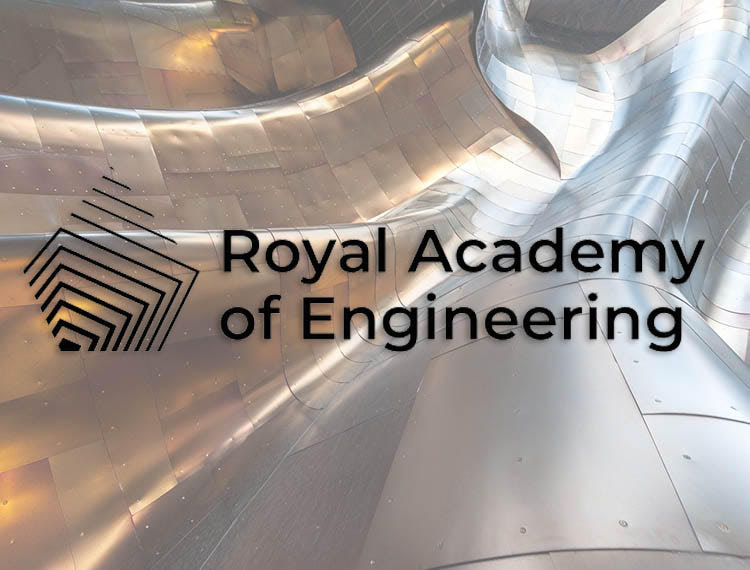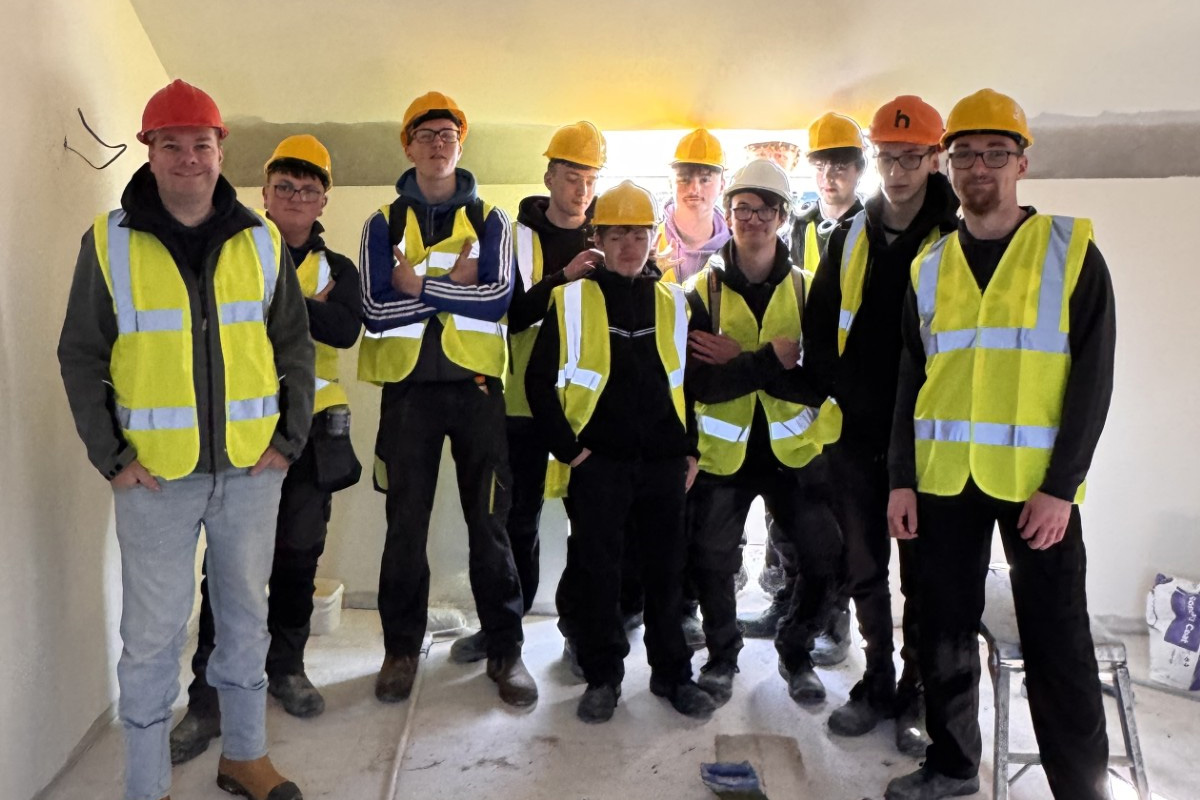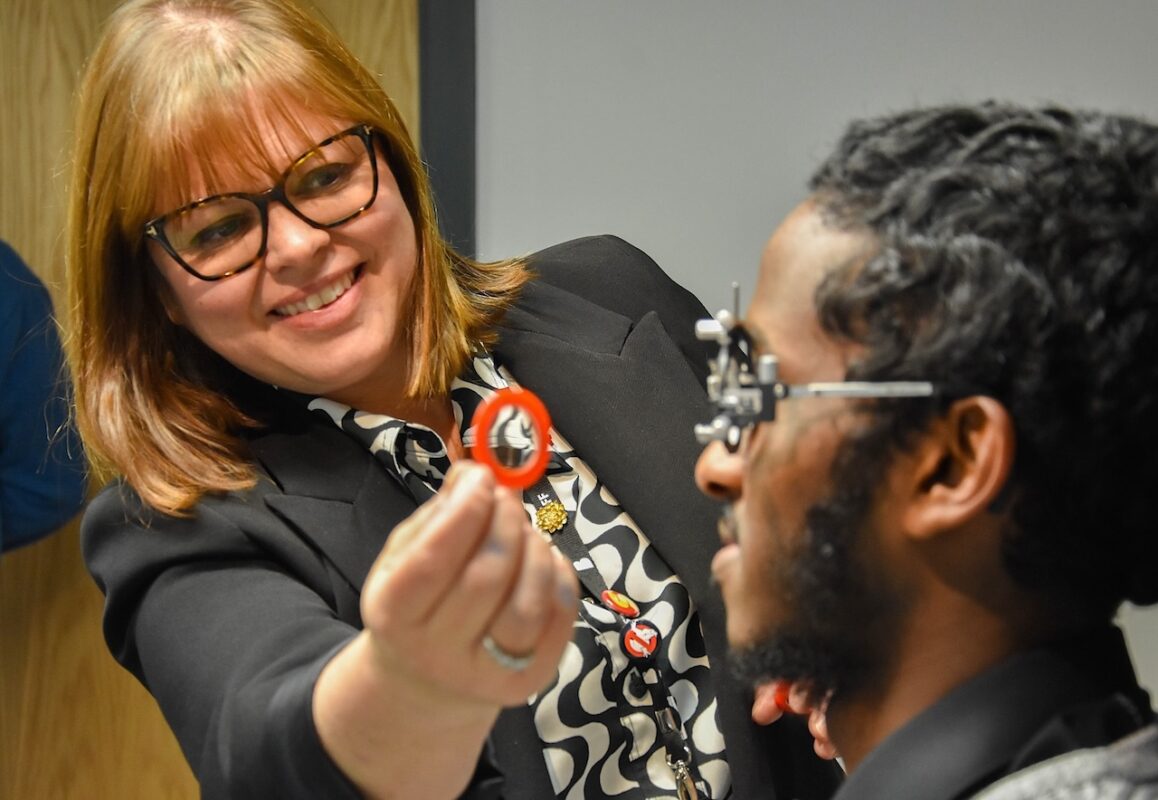Jonnie’s blade inspires next generation of engineers

#ThisIsEngineering – Paralympic gold medallist @JonniePeacock’s blade to become first exhibit in a new virtual museum, being developed by the Royal Academy of Engineering (@RAEngNews) to help tackle engineer shortage in the UK
- Paralympic gold-medallist Jonnie Peacock’s blade will become the first engineering exhibit in a new virtual museum accessible via QR Codes or ‘QRtefacts’
- Visitors will be able to explore the ground-breaking engineering innovations that are tackling societal issues and shaping the everyday, including an exhibit on developing a Covid-19 vaccine
- The Royal Academy of Engineering has announced plans to create the Museum of Engineering Innovation to celebrate often unsung engineering accomplishments and inspire engineers of the future in response to the worrying engineer shortage in the UK
- The Museum, which will roll out in 2021, aims to challenge the narrow stereotype of engineering and encourage people from more diverse backgrounds to consider a career in the profession
- A preview collection of exhibits will be published on Google Arts & Culture onThis is Engineering Day
Plans to create a new virtual museum have been announced today by the Royal Academy of Engineering in an effort to address narrow perceptions of engineering that are contributing to a skills and diversity shortfall in the profession in the UK. Research from 2018 estimated that there is a 59,000-engineer shortfall in the UK each year1, while only 12% of the engineering workforce are female and just 9% are from BAME backgrounds.
Instead of being housed in a building, the exhibits in the virtual Museum of Engineering Innovation, when it rolls out in 2021, will be accessible via QR codes or ‘QRtefacts’. Placed in accessible locations dotted around the UK, each QRtefact will signpost users to an individual exhibit within the online Museum. Also accessed via Google Arts & Culture, the Museum will celebrate the often-unseen engineering that is all around us, shining a spotlight on the diverse engineers that are making a difference to our everyday lives and futures in a bid to inspire the next generation.
The first collection of exhibits will include the carbon fibre blade of reigning world champion and gold medallist, Jonnie Peacock. A QR code has been placed on the ‘Ferrari of running legs’, giving everyone (who can keep up with him) access to the virtual museum. Once scanned, or by visiting the Google Arts & Culture platform, visitors will be able to learn about the incredible engineering that went into making Jonnie’s blade, and how far the sporting world has come thanks to engineered high-performance prosthetics.
Jonnie Peacock comments on his blade becoming the virtual museum’s first QR-tefact:
“Whenever I wear my blade I get such a great response, particularly from children, able bodied and disabled, who think it’s really cool. I’d like them to know that I wouldn’t be where I am today and have this super cool prosthetic leg if it wasn’t for engineers and amazing feats of engineering, which is why I am supporting This is Engineering Day, to help demonstrate some of the many different ways engineering makes a difference and to inspire the engineers of the future.”
The exhibits on ‘display’ at the museum will highlight the engineering that we often take for granted, but that has helped change, improve and in some instances, save lives. Exhibits will include Jonnie’s Blade along with the following2:
- The Factory-in-a-box, developed by Professor Harris Makatsoris and his team of engineers at King’s College London, minimises the space and equipment needed for high volume vaccine manufacturing, making it possible to produce RNA-based vaccines, such as one of the vaccines being developed to tackle Covid-19, in any location and at a much faster rate than a typical vaccine manufacturing plant.
- The pBone, which is the first 3D printed plastic trombone. The recyclable ABS plastic3 instrument, which weighs less than a kilogram and uses fewer resources than its brass cousin, is designed to encourage younger players who have difficulties with the weight and balance of a normal trombone
- Bricks made from recycled and breathable materials, also known as K-Briq, which will be used to create the 2021 Serpentine Pavilion
- Motion capture digital technology, created by actor Andy Serkis’ company Imaginarium, that turned The Tempest’s Ariel into a 17ft high harpie in the Royal Shakespeare Company’s 2017 production
- How the Singing in the Rain production, relaunching at Sadler’s Wells Theatre in 2021, made it rain on stage, whilst ensuring equipment stayed dry, avoiding technical problems
- The 15-metre Arcadia Spider, which attracts thousands of party goers at Glastonbury Festival – an impressive, if unusual, example of engineering
- A range of artwork shining a light on award winning feats of engineering by conceptual still life photographer Ted Humble-Smith
The announcement falls on This is Engineering Day (4th November), a national awareness day led by the Royal Academy of Engineering to address the narrow stereotype of engineering, celebrate the varied and vital roles that engineers play, and encourage more young people to consider a career in the profession. The day is part of Tomorrow’s Engineers Week, a week of activities designed to provide inspiring and exciting opportunities for young people to experience the world of engineering.
On This is Engineering Day the Academy will also be calling on organisations and brands that rely on engineers and engineering to nominate engineering innovations that are making a difference to exhibit in the Museum in 2021.
Dr Hayaatun Sillem CBE, Chief Executive of the Royal Academy of Engineering, comments:
“Engineers play a profoundly important role in shaping the world around us, however research3 reveals that over three quarters (76%) of young people aged 11-19 and 73% of parents do not know a lot about what those working in engineering actually do. This is an issue that affects all of us because without a skilled and diverse engineering workforce we will not be able to power a sustainable economic recovery in the UK, or tackle some of our biggest global challenges.
That’s why today, on This is Engineering Day, we are announcing plans to create the virtual Museum of Engineering Innovation. This is Engineering Day gives us an opportunity to bring untold stories to life in a way that shows the surprising and inspiring role that engineers play as hidden enablers of progress. Engineering is a fantastic career if you want to make a difference, improve people’s lives and shape the future, and through our Museum of Engineering Innovation we want to inspire many more people from all parts of society to become future engineers.”
Amit Sood, Director of Google Arts & Culture, comments:
“If you were asked what links a West End musical, an Olympic athlete and the Mary Rose ship, what would the answer be? These are just a few examples of the stories that the Royal Academy of Engineering are bringing to life that demonstrate the importance of engineering in our daily lives. We are delighted to share a selection of online exhibits on Google Arts & Culture to help celebrate This Is Engineering Day and we are looking forward to building on this initial launch for audiences around the world to get inspired by engineering.”











Responses